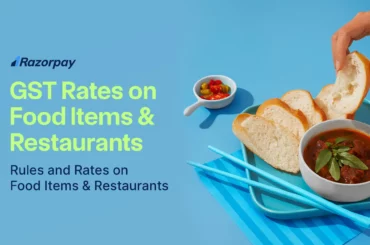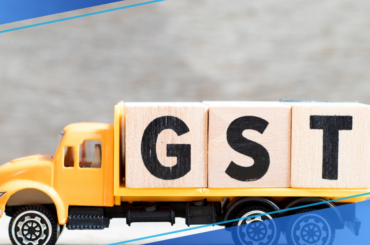Table of Contents
What is Composition Scheme in GST?
The composition scheme is a simplified GST tax-paying mechanism for small businesses whose aggregate turnover does not exceed ₹1.5 crore for suppliers of goods or ₹50 lakh for suppliers of services in the preceding financial year.
It lowers your compliance burden by enabling a reduced tax rate of 1% to 6% based on your business type. Unlike regular GST, which requires multiple monthly returns, the composition scheme only requires one quarterly return (CMP-08) and an annual return (GSTR-4), simplifying tax management with less paperwork and lower tax liability.
Who Can Opt for the Composition Scheme?
A small business whose aggregate turnover does not exceed:
- Rs. 1.5 crore for suppliers of goods (Rs. 75 lakhs for special category states such as Himachal Pradesh and states in North-Eastern India)
- Rs. 50 lakh for suppliers of services
Who Cannot Avail the Composition Scheme?
- Businesses making interstate outward supplies of goods
- Suppliers of goods not taxable under GST
- Suppliers selling through e-commerce platforms that collect tax under Section 52
- Manufacturers of notified goods, such as tobacco, ice cream, and pan masala
- Casual dealers or temporary business operators
- Non-resident foreign taxpayers conducting business in India
- Entities registered as Input Service Distributors (ISD)
- Persons registered as TDS Deductor/Tax Collector
Conditions for Opting for the Composition Scheme
- You cannot supply goods that are exempt from GST, such as alcohol
- You are ineligible to claim input tax credits
- Transactions under reverse charge must be taxed at regular GST rates
- You must display “composite taxable person” on all business signage and bills of supply
- If you own multiple businesses under one PAN, all must be collectively registered under the scheme
- As per the CGST (Amendment) Act of 2018, traders and manufacturers offering services up to ₹ 5 lakh or 10% of turnover (whichever is higher) can avail the scheme
What is the GST Composition Scheme Limit?
1. For Goods (Traders and Manufacturers)
The turnover limit is ₹1.5 crore for suppliers of goods in the previous financial year.
2. For Special Category States
The turnover limit is ₹75 lakh for suppliers of goods in special states like (Arunachal Pradesh, Manipur, Meghalaya, Mizoram, Nagaland, Sikkim, Tripura, Uttarakhand)
3. For Service Providers
The turnover limit is ₹50 lakh for suppliers of services in the preceding financial year.
4. For Mixed Businesses (both goods and services)
The scheme applies if the aggregate turnover for goods is within ₹1.5 crore and services up to ₹5 lakh or 10% of turnover
Features of the Composition Scheme Under GST
- Tax is calculated based on turnover, making the scheme favourable for businesses with lower revenues
- Lower tax rates help businesses maintain higher liquidity by reducing outflows
- Composite dealers cannot issue tax invoices; instead, they must issue bills of supply
- Businesses under this scheme cannot claim input tax credit on their purchases
- Normal GST rates apply for transactions under the reverse charge mechanism
- All businesses under a single PAN must be registered collectively under the composition scheme. If one opts out, all must do so
What Are the GST Rates Applicable to a Composition Dealer?
Business Type |
CGST |
SGST |
Total |
| Manufacturers and Traders (Goods) | 0.5% | 0.5% | 1% |
| Service providers | 3.0% | 3.0% | 6% |
| Restaurants not serving alcohol | 2.5% | 2.5% | 5% |
Note: GST rates for composition dealers are determined by the type of goods or services supplied and the annual turnover.
GST Composition Scheme Forms
Form |
Purpose |
| GST CMP-01 | To opt into the scheme by provisional GST registration holders (from VAT regime) |
| GST CMP-02 | Intimation of willingness to opt into the scheme for GST registered normal taxpayers |
| GST CMP-03 | Submission of stock details and inward supplies from registered and unregistered persons |
| GST CMP-04 | Intimation of withdrawal from the composition scheme |
| GST CMP-05 | Show cause notice issued by a proper officer in case of rule contraventions |
| GST CMP-06 | Response to the show cause notice |
| GST CMP-07 | Issuance of order based on show cause notice |
| GST REG-01 | Registration under the composition scheme |
| GST ITC-01 | Declaration of inputs in stock, semi-finished, and finished goods upon exiting the scheme |
| GST ITC-03 | Intimation of input tax credit available |
How to Opt for the GST Composition Scheme?
1. New Taxpayers
Opt for the composition scheme by selecting it in the Application for New Registration (Form GST REG-01) during the registration process
2. Existing Taxpayers
File your GST with Form GST CMP-02 on the GST portal. This must be done before the commencement of the financial year in which you wish to use the composition scheme.
How Should a Composition Dealer Raise Bill?
A composition dealer is required to issue a Bill of Supply instead of a tax invoice, as they are not allowed to collect GST from customers. The dealer must pay the tax themselves under the composition scheme.
The Bill of Supply must include the following key detail at the top: “Composition taxable person, not eligible to collect tax on supplies.”
This declaration informs the recipient that the dealer is under the composition scheme and cannot charge tax on the transaction. By following this process, composition dealers ensure compliance with GST regulations.
Related Read: GST Registration Limits: Threshold limit for GST Registration for 2025
GST Composition Scheme Bill Format
- Supplier’s name, GST Identification Number (GSTIN), and address
- Unique serial number, referred to as the bill of supply number
- Date of issue of the bill of supply
- Recipient’s details, including name, address, and GSTIN (if registered)
- HSN code of goods being supplied
- Description and quantity of goods/services (as applicable)
- Total value of supplies, adjusted for any applicable discounts
- Signature of the supplier
How Should GST Payment be Made by a Composition Dealer?
A composition dealer follows a distinct GST payment process, which includes the following components:
1. GST on Supplies Made
The dealer is responsible for paying GST out of their pocket for the supplies they provide, as they cannot charge customers directly.
2. Reverse Charge Tax
The dealer must pay tax on transactions under the reverse charge mechanism, where the recipient is liable to pay GST instead of the supplier.
Tax on Purchases From Unregistered dealers: This applies only to specific goods and services and certain notified registered persons. As of February 1, 2019, this provision is inactive unless officially announced.
GST returns to Be Filed by a Composite Dealer
1. CMP-08
A composition dealer must file this quarterly return to pay tax for the supplies made during the quarter. The payment and submission are due by the 18th of the month following the end of each quarter.
2. GSTR-4
This annual return must be filed by a composition dealer by 30th April of the next financial year, starting from FY 2019-20. It provides a summary of the transactions, including the details of the taxes paid under the composition scheme.
Process of Filing Returns Under the Composition Scheme
Filing returns under the GST Composition Scheme is designed to be straightforward and less burdensome compared to the regular GST filing process.
Here’s a simplified guide to the process:
1. Quarterly Return (CMP-08):
- What to File: Every quarter, you need to file Form CMP-08.
- What It Covers: This form is used to pay the tax due for the supplies made during the quarter.
- Due Date: CMP-08 must be filed by the 18th of the month following the end of the quarter. For instance, the return for the quarter ending June 30 should be filed by July 18.
2. Annual Return (GSTR-4):
- What to File: At the end of the financial year, you need to file Form GSTR-4.
- What It Covers: GSTR-4 is a summary return that consolidates all quarterly returns (CMP-08) for the entire financial year.
- Due Date: This return is due by April 30 of the following financial year. For example, for the financial year 2023-24, the return is due by April 30, 2025.
What Are the Benefits of the Composition Scheme?
1. Reduced Tax Liability
- One of the main advantages of the GST composition scheme is the significantly lower tax rates compared to the standard GST rates.
- For traders and manufacturers, the rate is just 1%, while restaurants (not serving alcohol) pay 5%, and service providers pay 6%.
- This lower tax burden means that small businesses can keep more of their earnings, making it easier to manage expenses and invest in growth.
2. Increased Liquidity
- With the composition scheme, businesses enjoy fixed tax rates, which helps them maintain higher liquidity. This means they have more cash on hand to cover day-to-day operations and unexpected expenses.
- Higher liquidity can be a game-changer for small businesses, allowing them to operate smoothly and take advantage of opportunities without being hampered by cash flow issues.
3. Minimal Compliance Requirements
- The scheme simplifies the compliance process for businesses. Instead of dealing with multiple returns and complex record-keeping, businesses under the composition scheme have to file only a quarterly return (CMP-08) and an annual return (GSTR-4).
- This reduction in paperwork and administrative hassle helps businesses focus more on their core operations rather than getting bogged down in tax-related tasks.
4. Exemption From Issuing Tax Invoices
Composition dealers are not required to issue tax invoices; instead, they provide a Bill of Supply. This makes the billing process easier and less cumbersome. Without the need to issue detailed tax invoices, businesses can streamline their transactions and reduce the time spent on accounting.
5. Lower Financial Costs
- The scheme also means lower interest rates on taxes due, as the fixed rate is lower than the regular GST rates.
- This reduction in financial costs supports overall business sustainability, helping small enterprises manage their finances more effectively.
What Are the Disadvantages of the Composition Scheme?
1. Restriction on Tax Collection
Businesses registered under the composition scheme cannot issue tax invoices or collect GST from their customers. This means they cannot pass on the tax burden to buyers, which can be a drawback, especially for those dealing in high-value transactions.
2. No Input Tax Credit
Businesses cannot claim input tax credit on their purchases, which can lead to higher costs. Since buyers of goods from composition dealers also cannot claim input tax credits, it can make products more expensive and less attractive to other businesses, potentially affecting sales and customer relationships.
3. Geographical Limitations
The composition scheme does not apply to inter-state supplies of goods. This restriction can limit the business’s reach and growth opportunities, especially for those looking to expand their market beyond their state. Additionally, it is not suitable for businesses engaged in e-commerce or those selling goods online across state borders.
4. No Tax Credit For B2B Transactions
Businesses that are part of the composition scheme cannot offer input tax credits to their B2B customers. This can lead to price distortions and make their products less competitive compared to those offered by regular GST taxpayers, as buyers registered under GST cannot claim credit for taxes paid on purchases from composition dealers.
FAQs
1. How to calculate the aggregate turnover for the composition scheme?
Aggregate turnover must be computed on an all-India basis for businesses with the same PAN. It includes the value of all taxable supplies, exempt supplies, exports of goods or services, and inter-state supplies. However, it excludes the value of inward supplies on which tax is payable under reverse charge and any taxes or cess paid under GST.
2. What is the minimum turnover for GST?
The minimum turnover for mandatory GST registration is ₹20 lakhs (₹10 lakhs for special category states). For the composition scheme, the limit is ₹1.5 crore (₹75 lakhs for special category states).
3. What tax rate applies to a Composition taxable person?
Composition taxable persons must pay:
- 1% for traders and manufacturers (0.5% CGST + 0.5% SGST)
- 5% for restaurants (2.5% CGST + 2.5% SGST)
- 6% for service providers (3% CGST + 3% SGST)
4. What is the effective date for the composition levy?
For those opting in via Form GST CMP-02, the effective date is the start of the financial year. For new registrations through Form GST REG-01, the effective date is determined by the provisions of sub-rule 2 or 3 of Rule 10 of CGST Rules, 2017.
5. What is the composition scheme under GST?
The composition scheme under GST is a simplified tax method intended for small taxpayers whose turnover does not exceed ₹1.5 crore (₹75 lakhs in some states).
6. What is the maximum penalty for the composition scheme under GST?
Penalties for non-compliance can be severe. If tax authorities believe a business is wrongly enrolled or ineligible, they may disqualify the business from the scheme or impose a penalty equal to the tax owed. Late filing of GSTR-4 incurs a fine of ₹50 per day, up to a maximum of ₹2,000. Failing to file returns for three consecutive tax periods may lead to cancellation of the registration.






2 Comments
thank you -Sir/ Madm – for your information published in the side – and which content of subject helped me
Thanks so much, G Srinivasrao.